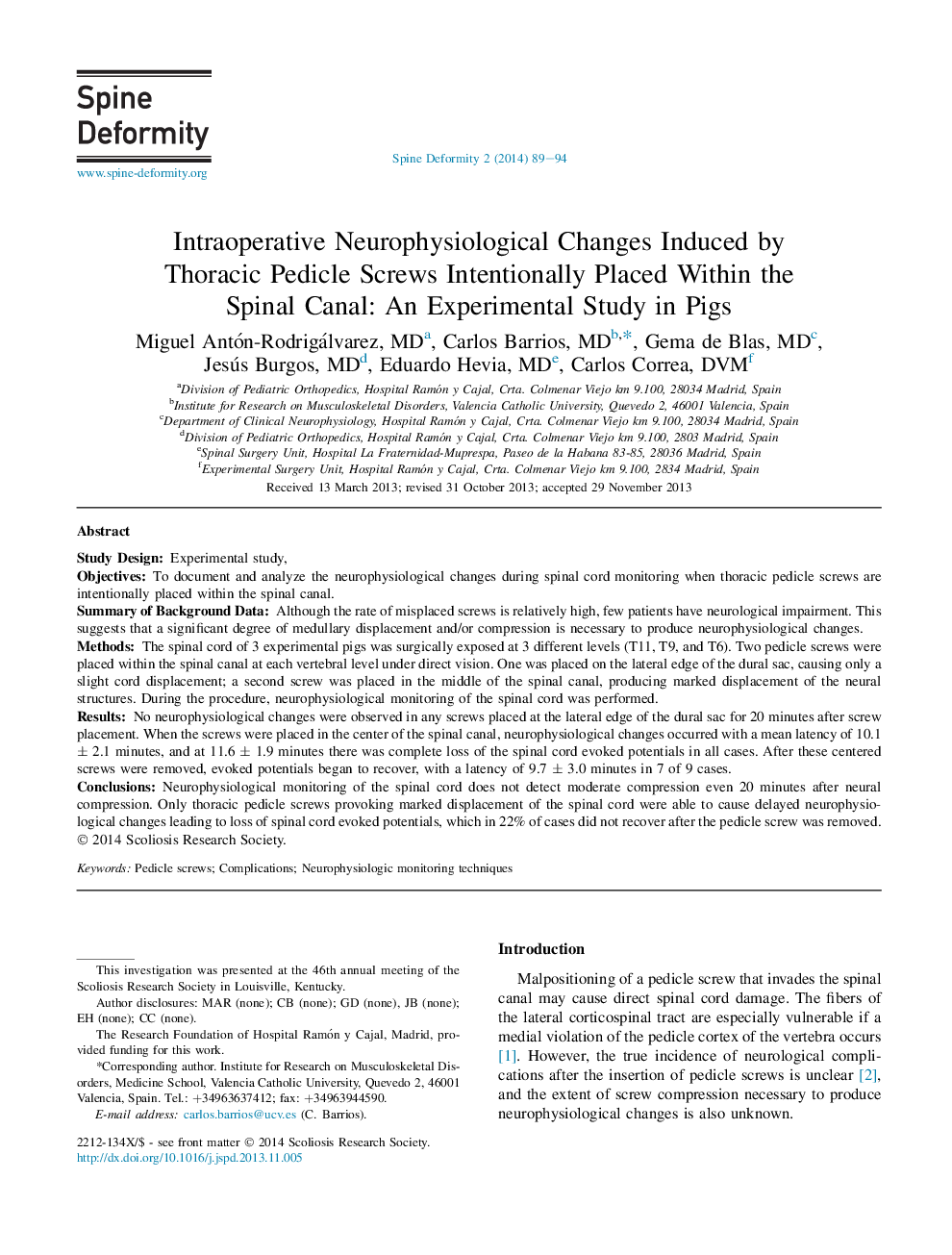| کد مقاله | کد نشریه | سال انتشار | مقاله انگلیسی | نسخه تمام متن |
|---|---|---|---|---|
| 4095362 | 1268530 | 2014 | 6 صفحه PDF | دانلود رایگان |
Study DesignExperimental study,ObjectivesTo document and analyze the neurophysiological changes during spinal cord monitoring when thoracic pedicle screws are intentionally placed within the spinal canal.Summary of Background DataAlthough the rate of misplaced screws is relatively high, few patients have neurological impairment. This suggests that a significant degree of medullary displacement and/or compression is necessary to produce neurophysiological changes.MethodsThe spinal cord of 3 experimental pigs was surgically exposed at 3 different levels (T11, T9, and T6). Two pedicle screws were placed within the spinal canal at each vertebral level under direct vision. One was placed on the lateral edge of the dural sac, causing only a slight cord displacement; a second screw was placed in the middle of the spinal canal, producing marked displacement of the neural structures. During the procedure, neurophysiological monitoring of the spinal cord was performed.ResultsNo neurophysiological changes were observed in any screws placed at the lateral edge of the dural sac for 20 minutes after screw placement. When the screws were placed in the center of the spinal canal, neurophysiological changes occurred with a mean latency of 10.1 ± 2.1 minutes, and at 11.6 ± 1.9 minutes there was complete loss of the spinal cord evoked potentials in all cases. After these centered screws were removed, evoked potentials began to recover, with a latency of 9.7 ± 3.0 minutes in 7 of 9 cases.ConclusionsNeurophysiological monitoring of the spinal cord does not detect moderate compression even 20 minutes after neural compression. Only thoracic pedicle screws provoking marked displacement of the spinal cord were able to cause delayed neurophysiological changes leading to loss of spinal cord evoked potentials, which in 22% of cases did not recover after the pedicle screw was removed.
Journal: Spine Deformity - Volume 2, Issue 2, March 2014, Pages 89–94
